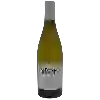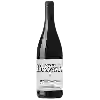
Domaine de SabbatNaughty by Nature
This wine generally goes well with beef, veal or pasta.
Food and wine pairings with Naughty by Nature
Pairings that work perfectly with Naughty by Nature
Original food and wine pairings with Naughty by Nature
The Naughty by Nature of Domaine de Sabbat matches generally quite well with dishes of beef, pasta or veal such as recipes of roast beef in a foie gras and chanterelle crust, pasta with neapolitan sauce and mushrooms or atriaux en sauce.
Details and technical informations about Domaine de Sabbat's Naughty by Nature.
Discover the grape variety: Posip
A very old grape variety grown in Croatia, on the island of Korcula in southern Dalmatia. It is said to be the result of a natural cross between two Croatian grape varieties, zlatarica blatska and bratkovina. It should not be confused with furmint, which has the synonym posip. Today, Posip can be found throughout Croatia and neighbouring countries... in France it is almost unknown, yet it seems interesting in the production of different/original white wines to discover.
Informations about the Domaine de Sabbat
The Domaine de Sabbat is one of of the world's greatest estates. It offers 11 wines for sale in the of Côtes du Roussillon Villages to come and discover on site or to buy online.
The wine region of Côtes du Roussillon Villages
The wine region of Côtes du Roussillon Villages is located in the region of Côtes du Roussillon of Languedoc-Roussillon of France. Wineries and vineyards like the Domaine du Clos des Fées or the Domaine de Rombeau produce mainly wines red, white and pink. The most planted grape varieties in the region of Côtes du Roussillon Villages are Mourvèdre, Lledoner pelut and Pinot noir, they are then used in wines in blends or as a single variety. On the nose of Côtes du Roussillon Villages often reveals types of flavors of cherry, anise or black plum and sometimes also flavors of citrus fruit, tree fruit or fennel.
The wine region of Languedoc-Roussillon
Languedoc (formerly Coteaux du Languedoc) is a key appellation used in the Languedoc-Roussillon wine region of southern France. It covers Dry table wines of all three colors (red, white and rosé) from the entire region, but leaves Sweet and Sparkling wines to other more specialized appellations. About 75% of all Languedoc wines are red, with the remaining 25% split roughly down the middle between whites and rosés. The appellation covers most of the Languedoc region and almost a third of all the vineyards in France.
The word of the wine: Red winemaking
Transformation of grapes into must and wine under the effect of alcoholic fermentation. The vinification of red wines takes place in several stages: destemming, crushing, alcoholic fermentation, vatting, running off and maturing.














